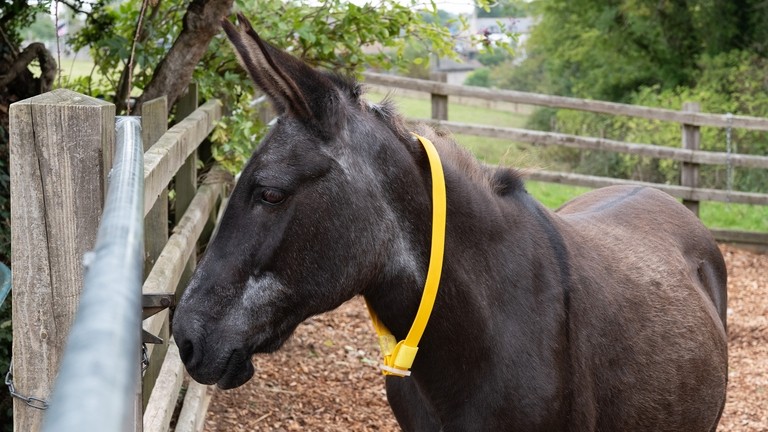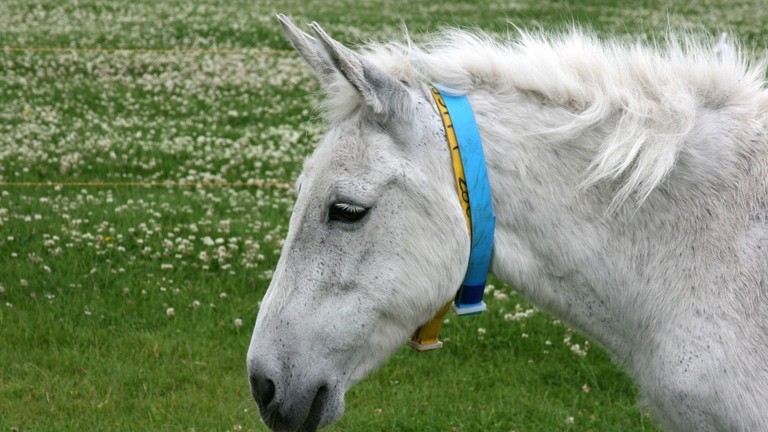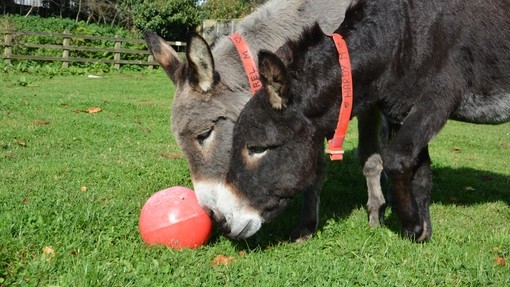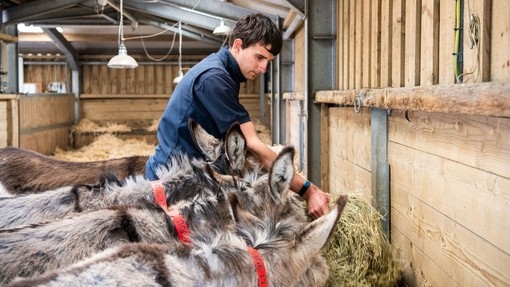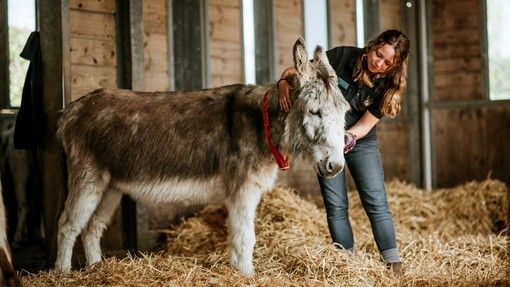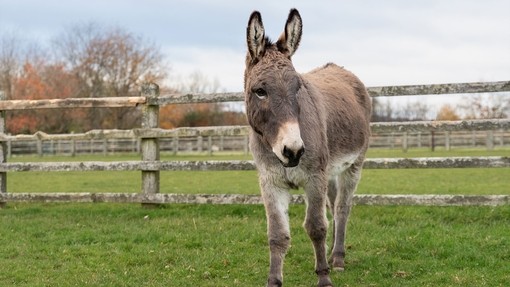Key facts about mules and hinnies
Mule: The result of a donkey stallion mating with a female horse. Mules tend to have the head of a donkey and the extremities of a horse.
Hinny: The result of a horse stallion mating with a female donkey. Hinnies are less common than mules and there might be subtle differences in appearance.
Size: Varies greatly depending on the stallion and mare. It can range from 91-172cm.
Health: Hardy and tough. They often have good immune systems.
Strength: Extremely strong. They pull heavy loads and carry much heavier weights than donkeys or horses of a similar size.
Behaviour: Intelligent and sensitive. They can have unpredictable reactions.
Appearance: Smaller ears than a donkey, the same shape as horse ears. The mane and tail of a hinny is usually similar to a horse.
Vocalisation: A mixture of a donkey’s ‘bray’ and a horse’s ‘whinny’.
Sex: Male is a ‘horse mule’ (also known as a ‘john’ or ‘jack’). Female is a ‘mare mule’ (also known as a ‘molly’).
Young: A ‘colt’ (male) or ‘filly’ (female).
What is hybrid vigour?
Hybrid = a crossbreed Vigour = hardiness or resilience
- ‘Interbreeding’ (crossbreeding) can remove weaker characteristics and instead pass on desirable inherited traits. This is ‘hybrid vigour’, a term often associated with mules and hinnies.
- Mules and hinnies develop strong immunity, which makes them good at fighting off illness. Although they are susceptible to the same diseases as horses or donkeys, they seem to become ill less often.
- Physically, mules and hinnies are powerful with good endurance.
- The behaviour of mules and hinnies is a mixture of their horse and donkey parents. Horses are known for their flighty behaviour, choosing to run away rather than fight danger as donkeys often do. Mules and hinnies are sensitive and can have mixed responses to certain situations, which may lead to unpredictable or explosive behaviour.
What can mules and hinnies do?
Due to their intelligence and unique characteristics, mules and hinnies can be easily misunderstood.
The belief that mules and hinnies are stubborn is a misconception; they are clever and very trainable. Being quick to learn, they can pick up good and bad habits with equal speed. You must be clear what you are asking of them.
Train mules and hinnies calmly, patiently, and with a great deal of understanding. They will remember any negative experiences. Novice equine owners should not train mules or hinnies. Animals that have had painful or frightening training experiences will be difficult to handle in the future.
When properly trained, mules and hinnies:
- behave well under saddle, competing in dressage, show jumping, and endurance sports. They have a great ability to high jump from a standing start, with small mules (125 cm) clearing heights of 178 cm.
- make useful draught animals. They are relied on in many countries for transport, farming, and to carry people and materials.
- can carry equipment and supplies to remote areas that are not accessible by vehicles. Mules and hinnies can withstand extremes of climate and thrive in tough environments, hence their use as pack animals, often grouped together to form mule trains.
- are less likely to run away than horses when faced with a dangerous situation. This led to their use during wartime, particularly for carrying ammunition and explosives.
Mules and hinnies are remarkable animals. In the right home, they can make great companions for other equines, and wonderful pets. However, if they are unhandled or not correctly trained, mules and hinnies have the potential to be dangerous.
How do I care for my mule or hinny?
Before giving a home to a mule or hinny, you need a good understanding of their behaviour, and experience in keeping equines.
In most aspects of their care, treat your mule or hinny in a similar way to other equines. However, there are a few specific differences to consider. You should:
- feed slightly less food than for a horse of similar size, although feeding requirements depend on the individual animal
- feed your mule or hinny in the same way as a donkey. Most of their diet should consist of straw and limited hay or grazing. Do not feed grain or cereal-based feeds
- allow as much time out in the paddock as possible, bearing in mind weight management and laminitis risk. Mules and hinnies stabled for long periods do not settle well
- make sure fences are high and secure to prevent escape. They can jump fences from a standstill
- provide a companion. The company of another equine is important, be this a horse, pony, donkey, or another mule
- provide mental stimulation to help prevent boredom and improve welfare. See our factsheet on environmental enrichment.
- find physical activities to suit their individual needs, helping them stay fit and healthy. This could be running around in a field, daily in-hand exercise, or work under saddle
- arrange routine preventative healthcare. Mules and hinnies can still become ill, and may be prone to laminitis. See our donkey care calendar for more information.
- have feet trimmed every 6-10 weeks. You need an understanding farrier. Mules and hinnies can be nervous of foot trimming if they have not been fully trained
- have males castrated to help regulate their temperament and make them safer to manage. If not, they will keep the urge to breed, and become extremely challenging to handle
- try positive reinforcement with treats to give good lasting experiences of vet visits. Mules and hinnies can easily become intolerant of veterinary treatment if they associate vet visits with pain or fear
- it is crucial your vet understands mule behaviour and is comfortable with treating your mule or hinny. They may be much less sensitive to certain drugs than other equines, and metabolise drugs faster. Your vet can seek advice from the veterinary department at The Donkey Sanctuary if they have any questions or concerns.
It is important to understand and accept that mules and hinnies are not like horses. They are much more of a challenge to understand and work with. Owning a mule or hinny is not for everyone.

